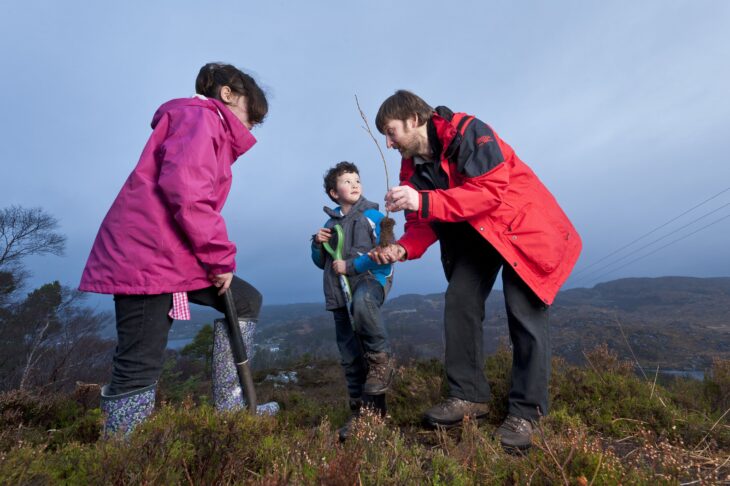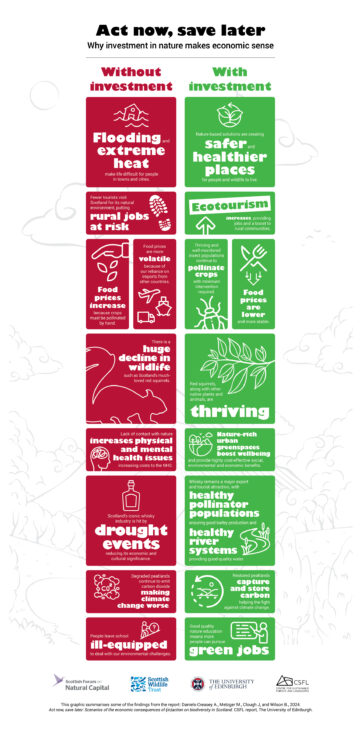A new report published today has revealed the potentially devastating consequences Scotland could face if accelerated action is not taken to protect and restore nature.
The report, titled “Act now, save later”, is a collaboration between the Scottish Wildlife Trust and The University of Edinburgh’s Centre for Sustainable Forests and Landscapes, and was funded by the Esmée Fairbairn Foundation.
It examines two potential scenarios of what Scotland could look like in 2045, depending on how much funding and support is given to nature conservation. These scenarios are based on desk-based research and information discussed at a workshop with stakeholders working in the fields of economics, biodiversity and wider environmental issues.
The first scenario looks at a future in which no significant action is taken to tackle nature loss over the next 20 years. Participants agreed that this would lead to a situation in which the economy is declining, with rising prices and uncertainty around food production. It also indicated that the benefits we get from nature, such as clean water, would be reduced, rural areas would face depopulation and social inequalities would have worsened. Moreover, Scotland’s international reputation could be diminished.
In the second scenario, the report examines how Scotland might look if policy, action and funding in support of nature restoration are stepped up considerably. Findings suggest that this would result in a nation that is well on the way to nature recovery; people are thriving and all parts of society fully understand, value and respect the importance of wildlife. It also predicts that we would have a sustainable economy working alongside a healthy environment.

Community tree planting at Culag Woods, near Lochinver. ©Niall Benvie/2020VISION
Ruchir Shah, Director of External Affairs at the Scottish Wildlife Trust, said: “This report brings together so many different issues and lays bare just why nature restoration is so vital to all of them. We can see in its findings just how much nature underpins and connects all aspects of society, from health and wellbeing to the economy, and how important it is to act now and unlock future opportunities for growth.
“The report also highlights the urgency required in tackling the biodiversity crisis. Early action enhances resilience, and failure to invest in nature now will only cost us more in the long run. By acting promptly, we minimise long-term costs and keep our options open for future decisions. We’re not suggesting that these two scenarios are the only possible futures for Scotland – it’s not as simple as saying things will either be perfect or disastrous – but by acting now we can build momentum and greatly enhance our capacity to shape a sustainable and resilient future for everyone.”
In order to achieve a nature-positive future, the Trust are calling for action taken at all levels of society, starting with the Scottish Government’s upcoming budget, to be announced on 4 December.
Alys Daniels-Creasey from the University of Edinburgh said: “We’d like to thank everyone who took part in the workshop and contributed to this report. The collaborative effort behind this work highlights the importance of creative, cross-sector thinking in shaping sustainable and inclusive social and environmental futures. We hope to see significant commitments made to nature in Scottish Government’s upcoming budget, to support meaningful progress towards this vision.”
The full report can be downloaded from the University of Edinburgh’s website.

Infographic showing some of the potential consequences from action (or lack of) for nature restoration. © Scottish Forum on Natural Capital.
